Even before I’d purchased my house, I had noticed, during my initial expeditions onto eBay, how astoundingly cheaply some ten year-old laptops had been selling for. Machines which had debuted with a retail price of three thousand dollars or more could be had for under a hundred dollars. . . sometimes under fifty bucks. I pictured my parlor’s wall adorned with sleek shelves and sconces holding vintage NEC Ultralites, Zenith MinisPorts and SupersPorts, Toshiba T1000SEs, weird Olivettis and Kaypros, maybe an early IBM ThinkPad or a PC Convertible. . . all hooked up to run whatever primitive graphical screen savers their CGA or EGA graphics boards would support.
I imagined what that would look like at night, the laptops’ blue or red or green screens all aglow, their electro-luminescence filling the small room, and what I would feel like, sitting on my sofa and staring at it all. It would be computer geek nirvana. It would make up for my not having a girlfriend. I would be like Ozymandias in the final chapters of Watchmen, sitting in my master control room, plotting the fate of the world as I stared at my massed banks of monitors. Vintage laptops. Yessss. . .
Would I have been better off had I never stumbled upon eBay? Or at least, if I hadn’t been introduced to it at that particularly vulnerable point in my life? Online bidding activates the same pleasure and excitement centers in the brain as casino gambling. Probably the same ones as crack cocaine. I had a crack dealer right next door, but I wasn’t interested in his wares. I had my own crack, my online crack, my special computer geek crack.
More quickly than you can say, Free shipping!, I became eBay’s bitch.
My initial goal was to buy a dozen vintage laptops for my wall installation. Had I managed to stick to that relatively limited objective, I would have caused little damage to my equilibrium, my bank account, my self-regard, the floor joists of my house, and the FedEx delivery man’s lower back.
Of course, I wouldn’t be writing this essay had I managed to maintain that level of self-control.
The first laptop I placed bids upon was a Hewlett-Packard OmniBook 425. This was a machine I had long admired, one I considered the pinnacle of HP’s OmniBook line due to its unique combination of a 486-class microprocessor and its ability to run off disposable or generic rechargeable alkaline batteries. Already, I was straying from my original intention, for I meant to actually use the OmniBook for writing, to supplement my Poqet, and not for display.
That machine was stolen from me. Swiped. A rival bidder swooped down in the last seconds of the bidding period and beat my maximum bid. It felt as though I’d been slapped across the face with a wet motherboard. I vowed that I would not be so easily beaten again.
I watched other auctions in progress, clicking the Refresh button on my browser every thirty seconds. I researched what machines similar to those I was interested in had been selling for. I gradually learned eBay’s tricks and shortcuts. I set my alarm for those times in the middle of the night or the early morning when especially enticing auctions were set to close, so I could raise my maximum bid if I needed to.
I began to win. At first, I bid on anything that looked interesting or appealingly bizarre and which appeared to be in my price range: under eighty dollars for a vintage machine. The more I browsed, the more weird and compelling laptops I discovered. The early Zenith units, prior to their corporate buyout by Groupe Bull, looked delightfully clunky and zoftig, like computers made by Fisher Price, especially the models with the unique pop-up floppy drives–charmingly toylike. I learned that Hyundai, the Korean car maker, had produced an early laptop. GRiD Computers had manufactured the first laptop to be sent into space, and many of their units were virtually indestructible, with cases constructed of magnesium (my first thought upon receiving one of these babies in the mail was, “I could kill somebody with this thing”). Zeos had made a notebook computer with a screen that could swivel a full 360 degrees, allowing for presentations to small audiences in the days before screen projectors. Panasonic, the manufacturers of my first laptop, had come out in the early 1980s with the first all-in-one “portable,” the Panasonic Senior Partner, a nearly forty-pound footlocker-style monstrosity running CPM and featuring a built-in printer.
Shopping on eBay, I encountered a graveyard of dead or dormant manufacturers, companies which had endeavored to take advantage of the weedlike growth of personal computing, enjoyed their few years or moment in the sun, and then either went bankrupt, were absorbed by a larger company, or withdrew from the laptop market: Osborne, Kaypro, AT&T, NCR, Bondwell, GRiD, Micro-G, Amstrad, Mitsuba, AST, Timex, Canon, Altima, Hyundai, Epson, Blackship, The Leading Edge, Tandy, and Zenith.
I also learned about companies which started off on the wrong foot but had been able to survive and surmount their earliest, misbegotten efforts in portable computing, badly designed models which had garnered terrible reputations but which led to better (and more profitable) products down the line. These included Apple (the Macintosh Portable: thirteen pounds, non-backlit screen, and a trackball as big as a grapefruit); Dell (the Dell 320SLi and 325SLi, fabulous looking little subnotebooks whose AC adaptors tended to catch fire); and mighty IBM (the PC Portable, the PC Convertible, and basically every laptop they made prior to the first ThinkPad, when Big Blue finally found its groove).
Initially, I bid and bought with little discretion. I didn’t even care if the unit was fully functional or not, since I was still planning to use my vintage machines primarily for display. What mattered was that they be funky and cheap. Later, I became more picky, focusing on desirable qualities such as included peripherals (external floppy drives, extra batteries, custom carrying case, or manuals), overall cleanliness of the unit (ex-government laptops were the worst, invariably defaced with ID numbers scrawled in permanent marker; one-owner, personal household computers were the best), rarity, historical significance, full functionality (no missing or nonworking keyboard keys; no boot failures; no cracked hinges–the last, especially), and, scarcest of all, original packaging, the Holy Grail.
As I acquired more and more vintage portable computers, engaging in some fierce bidding wars along the way, I began to wonder whether a true collectors’ market was beginning to develop for these things. Were vintage laptops commodity appliances of declining value, like most used cars, or were they potential future collectibles, like Depression glass or pre-World War Two radios, which would climb in value? A few of the very early personal computers, particularly the early Apples and Heathkits and Commodore Color Computers, seemed to be showing some price appreciation on eBay. But these weren’t portables; they were early “home computers” which were riding the nostalgia market.
Would collectors grow nostalgic for laptops? Or were most laptops too psychologically tied to the office to generate fond nostalgia and desire? I certainly felt nostalgia for early laptops–I’d yearned for an NEC Ultralite or a Zenith MinisPort or a Toshiba T1000SE or a Compaq LTE when they’d come out, but they had been way, way out of my price range. Now, I could buy them. And I did. But was I a part of a growing cohort, or was I a freak?
I contemplated the IBM ThinkPad 701C, the subnotebook with the famous “butterfly” expanding keyboard, the machine I considered to be the last of the truly desirable and unique portable computers of the pre-Pentium and pre-Windows 95 era (I decided that the twinned introductions of the Pentium microprocessor by Intel and the Windows 95 operating system by Microsoft formed the dividing line between “vintage” and “modern” portable computers; after those milestones, laptops seemed to lose their brand uniqueness and become mostly interchangeable). Every couple of months, I noticed, the ThinkPad 701C, last produced about four years earlier, could be grabbed up a little more cheaply on eBay as the units came off lease and as refurbishing companies cleared out their stocks. Would this fantastic machine, the culmination of IBM’s design leadership in portables, continue to decline in price and value until it could be purchased for ten or fifteen bucks? Or would its value hit a floor, maybe stay there for a few years, and then begin to rise again as working units became more scarce and collectors’ interest perked up?
Human beings seem hardwired to intellectually justify with their forebrains courses of action which are desired by their reptile brains. Typically, the desire comes first, the justification later. I had tasted the fruits of eBay. Taste-um lots good, yum! I decided to gamble on the eventual development of a collectors’ market for old laptop computers. In fact, I decided to influence the development of a collectors’ market, to nurture it, if I could.
I would write the world’s first book on the burgeoning collectors’ market for vintage portable computers. I would tell readers how to get started in this fascinating new hobby, sharing my experiences so that they could avoid the mistakes I had made. I would list the most desirable models, illustrating their technical virtuosities, unique features, and historical significance. I would explain all about peripherals and batteries and the best vintage software and where to get these things. I would share my eBay buying (and sniping) hints. I would illustrate the book with photos of my own vintage laptops, of me using them in fascinating and funky locales around New Orleans and the Gulf South.
And at the same time, I’d continue buying up the most desirable models on the cheap. Before the collectors’ market began to take off. So that, once my book had done its work and primed the pump, I’d be able to turn around and sell most of my collection from my personal website. . . at a huge profit.
I would corner the market on vintage laptops. Just like the big boys did with markets for gold or silver or (remember Trading Places?) pork bellies.
{cue Evil Laugh} BWAAA-HAA-HAA-HAA-HAAAAAAHHH!!! And I will ruuuuuuule the world!
Do you see how brilliant this plan was? Not a brilliant plan to make money. But certainly a brilliant plan to justify to myself, my family, and my friends what I had started doing. The most beautiful aspect of it was that, by the logic I had created, the more laptops I bid on and bought–now, now! before the prices start going up!–the more money I stood to make in the long run. So my being helplessly hooked was actually a virtue.
Was I serious about this? Oh, yes, I was. At the same time I was shopping around Fat White Vampire Blues to literary agents, I was also shopping around a proposal package for COMPUTERS TO GO! The Lore and Lure of Vintage Laptops. I wrote a colorful introduction, packed chock-full of personal anecdotes. I developed a full outline, the skeleton of what would be a thick, meaty book:
* * * *
- 1. Introduction: Baby’s First Laptop
2. Laptop History 101
2.1 The Stone Age: Portables Before the IBM PC
2.2 The Iron Age: Lunchboxes, Luggables, and the Tandy 100
2.3 A New Form Factor: Coming of the Notebooks
2.4 They Threw a Party and Nobody Came: Zenith and the 2″ Floppy Drive
2.5 The Lexus of Laptops: Toshiba’s Rise to the Top
2.6 Poqet PC: the First One-Pound, Touch-Typeable IBM Compatible
2.7 The Rush for Speed: Compaq Drives the Market
2.8 The “Pencil Eraser” That Changed the World: IBM’s Irresistible ThinkPads
2.9 Laptops By Mail: Dell, Gateway, and the Direct Marketers of Computer Shopper
2.10 The Laptop Universe of 1994: More of Everything, and Faster, Too
2.11 IBM’s ThinkPad 701C Butterfly: the Tucker Torpedo of Laptops
2.12 The End of the Beginning: Pentiums, Windows 95, Subnotebooks, and Laptops That Laugh Off Coffee Spills
3. Just What Kind of Collection Do You Want, Anyway?
3.1 Tool, Toy, Show-piece, or Investment?
3.2 Defining Your Collection’s Boundaries
3.3 What Makes a Laptop Collectible–Is It Vintage, or Is It Just Old?
3.3.1 Top Ten Incredibly Cool Features
a) Pop-Up Floppy Drives
b) Detachable Keyboards or Screens
c) Battery Packs that Hold Disposable Alkalines
d) 2″ Mini Floppy Drives
e) Ruggedization
f) Non-Proprietary Rechargeable Battery
g) Pop-Out Mouse
h) Business-Class Office Suite in ROM
i) Computer and Printer in One Unit
j) Automatically Expanding Keyboard
3.3.2 Top Ten Features That Were Incredibly Cool When First Introduced But Have Since Become Mundane Because Everyone Copied Them
a) Built-In Power Management
b) Weight of Less Than Three Pounds
c) Docking Stations
d) Built-In Trackball
e) Accu-Point Cursor Joystick
f) PCMCIA (PC Card) Slots
g) Full-Color Screens
h) Built-In CD-ROM Drive
i) Select-a-Bay for Swapable CD-ROM Drive, Floppy Drive, or Second Battery
j) Ultra-Slim Form Factor
4. I Married a Laptop From the Outer Boroughs: Starting a Collection
4.1 Mail-Order Merchants
4.2 Buying on the World Wide Web
4.3 Refurbished from the Manufacturer
4.4 Swap Meets
4.5 Your Local Classifieds
4.6 Government Surplus Sales
4.7 And All the Rest–Garage Sales, Flea Markets, College Bulletin Boards, and Your Aunt Mabel
5. The Night eBay Drank My Soul: the Wild World of Online Auctions
5.1 Auctions, Auctions Everywhere
5.2 Know What You’re Looking For, and Know What It’s Been Selling For
5.3 Reading the Fine Print (What Isn’t Written is Often Just as Important as What Is)
5.4 “We Believe People are Basically Good”–Avoiding Being Taken for a Bum Ride
6. “What’ll It Do?”–Software for the Older Laptop
6.1 Productivity Software
6.2 Essential Utilities
6.3 Games and Other Fun Stuff
6.4 Where to Find It
7. Care and Feeding: Screens, Hinges, Drives, Batteries (the Devil is in the Details)
7.1 Good Tools to Have Lying Around
7.2 Oh, Those Damn Batteries! (And Don’t Forget the CMOS Batteries!)
7.3 Power Supplies (Those Damn Batteries Have Got to Get Their Juice From Somewhere)
7.4 Drives: Hard, Floppy, and CD-ROM
7.5 Screens
7.6 Body Imperfections: What You Can Live With, and What You Can’t
8. “I Get By With a Little Help From My Friends:” Finding Support Among Your Fellow Fanatics
9. Tomorrow’s Heart-Throbs: Vintage Laptops of Five Years From Now (All the Good Stuff You Can’t Afford Now, But Just Wait!)
+++++++
Photo Pictorial: Vintage Laptops in the Great Cafes of New Orleans
Between-Chapters Inserts: Working Writers Tell About Their Earliest, Most Unusual, and Favorite Laptop Writing Experiences
* * * *
Jesus, doesn’t that sound like a great book? I mean, wouldn’t you be thrilled to buy a copy as a gift for that special computer geek in your life? Honestly, I still get a little chill of pleasure (and desire) reading that outline.
Planning the book gave me all the more impetus (as if I needed any more) to buy more laptops. After all, the book would have much more value and accuracy if I could claim hands-on experience with the majority of the historical machines I was describing. Makes perfect sense, doesn’t it?
One of the key reasons for writing the book was to spread my obsession, uh, hobby among a larger pool of suckers, uh, connoisseurs and collectors. So I created lists, kind of like Dave Letterman’s Top Ten Lists, to better explain to readers why they should surrender to the, uh, hobby:
* * * *
Top Five Reasons Vintage Laptops are Like Sportscars
1) Laptop computers are more nimble than desktop computers.
The whole point of a laptop is that it’s portable. One advantage of a classic sports car is that it’s small enough to park in a tight, crowded garage. Similarly, one of the prime selling points of a laptop is that it’s ideal for cramped college dorm rooms, efficiency apartments, office cubicles, or messy desks. Also, for the home user, a laptop isn’t just portable outside the house–it’s portable inside the house, too. Those wintertime sun-deprivation blues getting you down? Get out of that dark office and take the laptop to the sun room.
2) Laptops are designed to be beautiful objects (particularly when you compare them with desktops).
Be honest now. Have you ever been knocked out by the design of a desktop computer? Ever since the debut of the original IBM PC in 1981, desktop computers have been designed to be as unobtrusive–as “business-like”–as possible. Beige boxes. Millions and millions of them. As distinctive and memorable as paper clips. But after the introduction of the first sub-seven-pound notebook computers in the late 1980s, laptop computers were perceived as status items, toys of the rich, powerful, and famous. Manufacturers paid close attention to how good their portable products looked, not only how well they worked.
3) Laptops are truly PERSONAL computers.
People tend to get very emotionally attached to things that they carry around with them or that they display in public. Parents and their babies. Women and their purses. Men and their convertibles. Frequent, close physical contact and the necessity to guard, shield, and protect this object (or person) from theft or harm combine to induce a fierce sense of possessiveness.
4) Laptops allow you to compute out in the big, wide world beyond the office.
Remember that sports car that put you up-close-and-personal with the weather, bugs, and pedestrians? Laptops can give you the same type of experience. Writing a volume in the Lonely Planet Guide series? A laptop is de rigueur (although don’t forget those international voltage adapters!).
5) Laptops are FUN computers.
You can take a laptop with you to all your fun places–your coffeehouses, diners, cabins in the woods, the beach. You can show your sleek, spiffy laptop off to your friends and acquaintances, in PUBLIC, where it counts.
* * * *
Eleven Good Reasons for Starting a Collection of Vintage Laptops
1) It’s cheaper than collecting vintage Jaguars.
2) It requires less storage space than a collection of vintage Jaguars.
3) The electrical wiring inside old laptops is far superior to the electrical wiring inside vintage Jaguars.
4) Cars become antiques when they hit twenty years old, whereas laptops become antiques when they hit five years old (or even earlier, if you’re unlucky enough to buy your computer just before Microsoft releases a major update of Windows).
5) Collecting vintage laptops keeps them out of America’s overcrowded landfills.
6) They might be worth something someday (like all those Beanie Babies).
7) It’s so much fun trying to find replacement batteries.
8 ) You can actually let your kids play with them (unlike items from, say, your gun collection).
9) Five years after those super-spooks from the Mission: Impossible movies do their thing with an incredibly sophisticated and cool laptop on the silver screen, you can buy exactly the same high-end model they used for less than a hundred bucks, then play James Bond to your heart’s content.
10) By collecting and preserving vintage laptops, you are helping, in your own small way, to commemorate the history of the late twentieth century.
11) Nearly all of them are still good for something–you can play vintage games on them or (gasp!) actually get work done.
* * * *
Are you under my spell yet? Ready to hit eBay or your local swap shop in search of that pristine MinisPort?
I had certainly fallen under my spell. I believed my own bullshit. Willed myself to believe it, anyway. PayPal had recently been introduced on eBay, and unlike its nearly universal usage today, only big sellers offered it as a payment option in 2000. I was mostly buying from the little guys, who demanded a certified bank check or money order up front. I suppose I was fortunate that this was the case, because the necessity of paying cash for money orders at least kept me from running up a credit account with PayPal and going into debt I might still be paying off.
This slight inconvenience may have placed a bit of a brake on my buying habits. But it wasn’t much of a brake. The cashiers at my local Winn-Dixie got to know me and my odd habit very well. Too well. I was in there at least three times a week, buying up to a dozen money orders at a time. “What are you buying with all these money orders?” they’d ask. “Computers,” I’d say. “For a business. And I’m a collector.” I kept a list of when I’d purchased and mailed the money orders, to whom, for which machine, and when the package arrived from FedEx or UPS or the USPS. The list grew to be many, many pages long.
Next: I break my house with the weight of my laptops. I meet the woman I will later marry and start a family with. I am too chicken to tell her about my vintage computer obsession. The Whistler robs me of sleep and peace of mind. Dara and I get married. Dara and I move into a bigger house. I move the laptops. Dara and I have Levi. Dara and I have Asher. I run out of vintage laptops to buy. I begin feeling ashamed of myself. Then the you-know-what hits the fan…


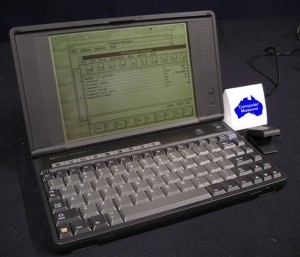
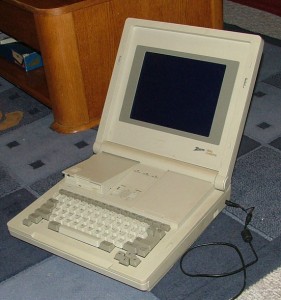
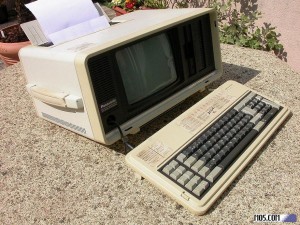
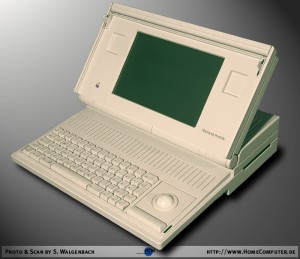
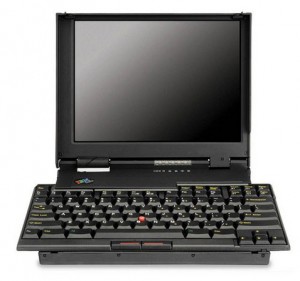
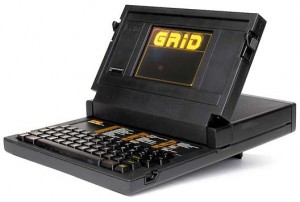
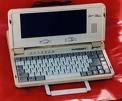
With a different spin, it actually would make a great book for computer enthusiasts over 40, and there are millions of us who originally researched and purchased those original laptops (now fathers with kids looking back with nostalgia), and as with anything, the price goes up with scarcity. In 2006, I sold around 50 old 486 Toshibas from my collection in great condition, and I couldn’t buy them back now at any price. I’ve seen some similar models going for many times what I sold them for. Over 5 years I bought them all off Ebay just as you did, and resold them all on Ebay when I divested due to a move. Your idea to corner the market may have been pie-in-the-sky, but if you had a suitable place to store your collection you would certainly be ahead in the long run just because of how difficult it has become to find vintage laptops in good condition. No, not rich, just ahead. Plus, you gained considerable knowledge and got to enjoy a consumer technological progression that only comes along once. The mobile computing revolution was as life-changing to us as electricity was a century earlier. You could still write something, maybe more of a coffee table book for the growing nostalgia market and all those people who actually know what a Computer Shopper magazine looked like would love to buy it! Especially when you inject your personal stories and your sense of humor.
Mark, what a pleasure to come back from my brief New Year break and to find these two messages from you. I might test the waters again regarding the book on vintage laptops, see what my agent thinks of the idea. My publishing career through traditional channels is pretty much comatose and has been for the past five years, but if I’m able to breathe any new life into it, I might be able to rouse some interest in the laptops book. Otherwise, I might push it out as a Do It Yourself project at some point, probably as an ebook. You’re absolutely right that those early years of portable computers were a time of great excitement and of machines which inspired passionate desire. We’ve lost that sense of excitement in the past twenty years as laptops and all computing devices have become commodified goods, perhaps with the exception of ruggedized laptops and extreme gaming laptops, two fringe markets. In my opinion, the last of the pioneering generation of portable computers was the IBM Butterfly (ThinkPad 701CS). After that machine, there was less and less to distinguish different manufacturers’ machines from one another. What is your background, by the way? Are you in the IT business, or are you more of an amateur aficionado? Again, I greatly appreciate your getting in touch.
It’s hard to argue with the 701CS being an innovative design when a model is on display at the NY Museum of Modern Art! I remember buying my Dad a used Thinkpad 701CS off eBay once they started to come off the business lease market and were affordable, and how amazed he was at that butterfly keyboard and how it retracted inside. Convertible tablet hinge design was also pioneering, but no one ever found a way to make it elegant although IBM tried hardest. I still own two 701CS’s in various conditions, although they are in storage. IBM manufactured a lot of these so they still pop up at auctions but almost never without flaws. Like most vintage Thinkpads, mechanically it’s either a hinge issue or a broken plastic retainer above the battery or hard drive. Once that happens it’s always sloppy to use. IBM made early Thinkpads to be serviceable in seconds, with interchangeable floppies, CD drives and hard drives, just by sliding two spring loaded clips on each corner, which also became a failure point. They also made the hinges stiff so that the lid would always stay open. However, once the machine screws started working loose by the hinges only the savvy users knew what to do (take off the hinge covers, remove the screws, apply adhesive to the threads and reassemble). I agree that everything that came after that was, and is blahh, but Thinkpads always continued that great keyboard up until the X230. I think I’ve owned nearly every early Thinkpad model except for the 360pe with the touch flip screen, which are extremely rare (one guy wants 200K for one on Ebay right now). In fact, my current primary mobile laptop for business is a Thinkpad convertible tablet with broadband card, but with the horrible chicklet keyboard. 90’s Thinkpads are probably the most widely-collected laptop series because there so many discontinued early models and so much history. I think what makes a laptop series collectible is whether people will still care about it 20 years later, so it either has to be from a memorable line with a lot of history, such as going up into space, an extremely innovative design, or the first at doing something unique. There is a big difference between being old and being collectible, although both have value. It is true that there is now nothing new under the sun and I think it takes owning these old models and remembering them, and using them to keep things in perspective.
I found this page while searching to see if others were suffering from the same affliction as myself. I have developed a strong affection for Toshiba Satellite A200 laptops. I now have a collection of 30, all repaired and working well. I acquired many of them from the local tip and others on eBay, all in a not working state, so costed little. Circular logic indicates that these laptops are collectible.
Part of the fascination is due to the unusually good sound quality which defies the tiny size of the speakers. But the diaphragm surrounds are often deteriorated. I have found a way of repairing/preserving the surrounds with liquid RTV silicone.
The big question now is, how long will they stay useful for?
Search for “A200 badcaps” to find how to repair their usual fault.
Xavier, thanks so much for getting in touch. My experience with the older laptops has generally been that they go over to “the dark side” either when their non-replaceable CMOS battery finally dies (soldered to the motherboard), or the display goes dark, or the hard drive accumulates a non-recoverable error. Still, the VERY early ones, pre-1988 or so, without battery-powered time/date clocks, often remain functional — the early Zeniths seem particularly sturdy. Good luck!
Andrew, This really hit me right between the eyes. I started about 1999 buying old laptop computers from the 1980-89 era for some dumb reason and like you I became obscessed with them. I did write a book and had it published in 2005 called: Vintage Laptop Computers, 1980-89 First Decade of Laptop Computers. It is still listed on a lot of sites including Ebay. In 2010 I was honored with 5 laptops from my collection being accepted for donation into the Museum of American History at the Smithsonian Institution in Washington DC. The book that I wrote is in the library of the museum as a reference book. I now have an example of almost every major model made by every manufacturer who made them in the 1980’s. I now have 110 laptops from 57 manufacturers and most all power on and boot up. There are less than 10 models made in the 1980’s that I have found to exist than I have not found a model for sale in 15+ years. So don’t give up write your book, GREAT FUN!!!!
Hey, Jim, great to hear from you! I’ve been aware of your book for many years. Yes, collecting the “oldies” can be a fascinating hobby. Interestingly, I see far, far fewer pre-Windows 95 laptops for sale on eBay than I did a decade back; perhaps only about 15% or 20% of the listings I used to see. I suppose that means that many of the old-timers have landed in landfills or in someone’s permanent collection (the former more likely). I kind of doubt I’ll get around to writing that book of mine now that the bulk of my collection is gone, but you never know… I have a lot of material stored up on my hard drive and in my head, and the golden lure of nostalgia may pull it out of me still. Keep in touch!
Andrew, about 3 years later, found 4-5 1980’s laptops that I have been looking for, down to needing about 5 more. I am not getting any younger, so I had better hurry if I am going to find them. Man you are right in very few from that era showing up for sale. There seems to be a lot of common ones but very seldom does a rare model show up. I have enjoyed reading your 6 parts so far, but never saw your book?? Guess that didn’t happen. Hope all is going well. Regards, Jim
I have an old laptop with the dot matrix printer.
It all powers up still. Interested?
If you are interested and would like pics, please email me at ewillmett@gmail.com